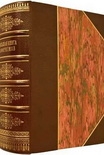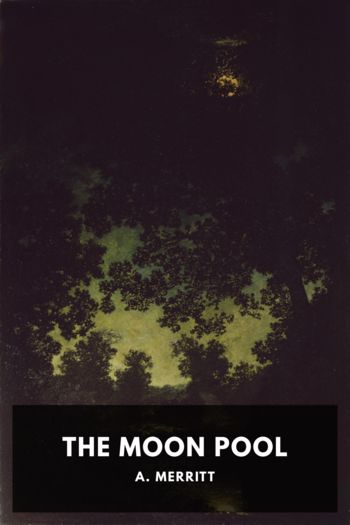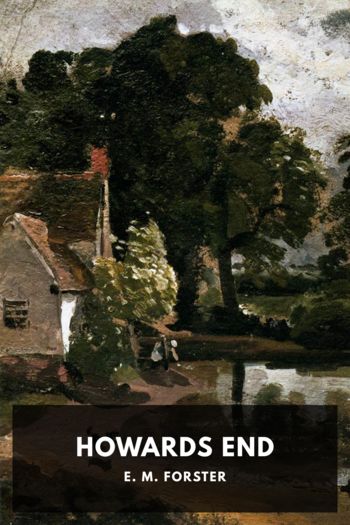How to Become a Witch, Amber K. [new books to read .txt] 📗

- Author: Amber K.
Book online «How to Become a Witch, Amber K. [new books to read .txt] 📗». Author Amber K.
In time, the Roman Church became intolerant of anyone it considered threatening to its power. Jews, surviving Pagans, homosexuals, and Christians with differing viewpoints—heretics—were tortured and often executed. Women, sometimes widows who had inherited wealth, were frequent targets. In 1320, Pope John XXII declared Witchcraft a heresy and authorized the Inquisition to act against it.
Thus began the Burning Times in Europe, which lasted almost four centuries. Tens of thousands of people, at the very least, were murdered as accused Witches or heretics all over Europe. In the New World, the persecutions were mostly limited to Salem, Massachusetts, in 1692 and 1693.
The Burning Times ended any live-and-let-live attitudes among the different faiths. When people were being imprisoned, tortured, hung, drowned, and burned as accused Witches, few actual Witches were about to assert their right to religious freedom.
A hammer—forged?
In 1487, two Dominican monks named Kramer and Sprenger wrote a book, the Malleus Maleficarum (“hammer against witches” in Latin), explaining in great detail how to capture and torture “witches.” Included were prewritten “confessions” that victims, usually women, could be forced to sign, admitting to devil worship and worse.
The book included a purported papal bull (message from the Pope) and an endorsement from the Theological Faculty at the University of Cologne; some scholars believe these were forged. After it was published and spread around Europe, the persecution of “witches” intensified. It was reprinted twenty-nine times between 1487 and 1669, and you can still get a copy today.
Did the worship of the Old Gods die in those days, or did it survive underground, as our stories declare? Or did mere fragments of the elder religion survive as folktales and rural customs, while any organization, leadership, theology, and teachings were lost?
Legend has it that the Old Religion survived but went underground. Secret covens and certain families kept alive the old ways. They celebrated the sabbats in wild places. They made turnip jack-o’-lanterns to frighten the Christian folk into staying indoors at night. They disguised their phallic ceremonial staffs as besoms (brooms) and pretended to be “good Christian folk.”
But after centuries of persecution, there were no visible Pagan faiths left in Europe. The Roman Catholic Church’s new rivals were the Protestant reformers.
The educated folk of the Age of Reason, or Age of Enlightenment, believed there were no such thing as Witches. Surely, they said, the Inquisition was all about religious power and social conflict, or perhaps mass hysteria—Witches were straight out of fairy tales! But some people believe that surviving covens of Witches anonymously encouraged this belief and waited.
The “witchfinder general”
During the “Burning Times,” Matthew Hopkins made his living by hunting and torturing “witches”—though most of them never practiced the Craft at all. For a price, Hopkins would hire out to any town council or other organization and receive a fat fee for each “witch” discovered. He would torture the accused and look for “witchmarks,” which might be a mole or birthmark thought to be the sign of the devil. When a village was empty of “witches”—or seemed to be running low on money for his fees—he would travel to the next “witch-infested” town and begin again.
In the rational, busy period from 1700 to 1900 or so, there were revivals or re-creations of both Druidry and ceremonial magick. From Witchcraft, there is mostly silence—but not total silence. We hear of Old George Pickingill (1816–c. 1909), from Canewdon in England, reputed “master” of nine covens. Occasionally a Book of Shadows will surface, purporting to describe a centuries-old Craft tradition. Stories are whispered of isolated English villages where the Old Religion was still practiced secretly well into the twentieth century.
In 1921, a distinguished British archaeologist named Margaret Murray published The Witch Cult in Western Europe, in which she theorized that the Witchcraft of the Middle Ages was actually the survival of an ancient Pagan religion. She followed this with The God of the Witches in 1931, explaining that Witches had worshiped a hornéd god of wildlife and hunting, who Christians immediately confused with their Satan figure. Though Murray was highly respected in her original field of Egyptology, conservative scholars and historians quickly dismissed her Witch theories.
Time passed.
The year was 1939. The National Baseball Hall of Fame opened, and CBS began broadcasting. Elvis Presley was four years old. General Motors introduced the automatic transmission, the first World Science Fiction Convention opened in New York, and Batman appeared in his first comic book. Meanwhile, a British civil servant named Gerald Gardner was secretly initiated into a surviving coven of Witches hidden in the New Forest of England. He would become known as the father of modern Witchcraft.
By 1949, Gardner was writing about the Craft, and in one of his later books he revealed himself to be an initiate. His two best-known works were Witchcraft Today (1954) and The Meaning of Witchcraft (1959). There has been dispute ever since as to whether the “New Forest coven” that initiated him really existed, and how much of the Craft that he passed on (the Gardnerian Tradition) was authentic and ancient, and how much was borrowed from ceremonial magick or invented by Gardner himself.
The 1950s arrived, with big red convertibles and rock ’n’ roll heroes. To the public, Witches were fantasy figures from fairy tales, as unreal as giants and trolls and unicorns. In 1951, one of the last surviving laws against Witches, the Witchcraft Act of 1735, was repealed in Great Britain. And Witchcraft, led by the Gardnerian Tradition, quietly spread throughout Western Europe, North America, Australia, and New Zealand.
The ancient traditions that inspired Wicca are dimmed by the mists of time, but the modern history is clear: a vital and creative spiritual tradition continues to grow and





Comments (0)